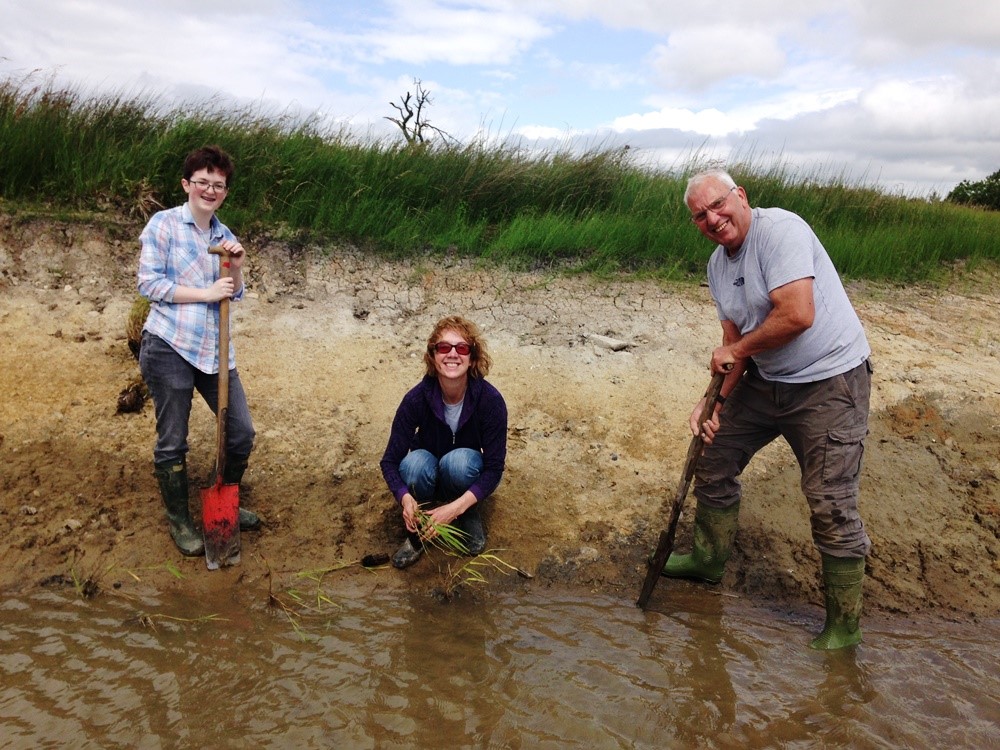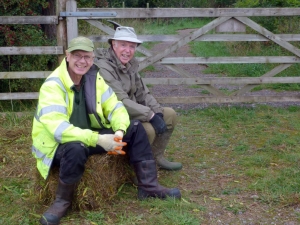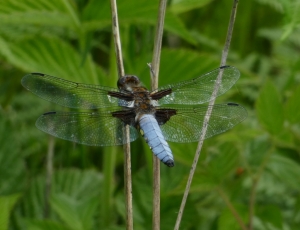Moths, Hipswell and Flowers
Wednesday, June 26th 2019
The moth traps were set last night, and for the first time we could set one away from the Field Centre. We have kept a record of which moths we have caught in which place and this information will be added to the data when it is entered into the Species Programme. From both traps we caught some lovely specimens.
We only caught a single Small Angle Shades moth, but it co-operated beautifully when released from the container to be photographed. The larvae feed on Bracken and other ferns, something to look out for.

The moth team use a book that has painted pictures of the moths that are actual size. This means we can place the insect directly on top of its picture to help in ID, as if they do 'not fit' then the chances are that it is not the right one. Last week we struggled to ID one. We eventually decided that it was Yellow Horned, but further investigation revealed that this large moth was actually Pale Tussock, but it was a little large for its picture. This week we caught another Pale Tussock and it decided to sit like a butterfly just to make ID a bit more interesting!

It is not often that we see the underwings but these were just too beautiful to ignore, so another photo of Pale Tussock - which we should remember next week!

Blood-vein moth is more common in the south but we do catch several in a season. Freshly hatched moths have very red markings, as they age so the colour fades.

Hipswell C of E Primary School visited Foxglove. They pond dipped and found snails, Diving Beetle Larvae, damselfly larvae and Three-Spined Sticklebacks. They also caught some very small Pond Skaters. The water was very cold and many of the pond creatures were obviously in hiding.

Minibeast hunting found slugs and the children soon realised that this damp weather was just right for slugs. The habitat walk took in comifer trees, deciduous trees, coppicing and pollarding. They had just started to learn about seed dispersal and were able to see a variety of seeds and discuss how they were dispersed.
Out on a walk across the moor in the late afternoon a movement saw a Chimney Sweeper Moth flying. It settled long enough for a photograph to be taken. This one was newly hatched as it was black, and the white edging could clearly be seen. The larvae feed on Pignut, of which there is plenty growing across the moor.

Flowers are still coming into bloom and the flower walk recorded over 70 flowers including Foxgloves

and Zig-Zag Clover.

And then it has to be 'And finally'. On my way out I stopped to talk to Lark and Taurus. Lark enjoyed my chatter and even laughed at my jokes!

Thank you to everyone today who were involved in so many different activities. Our volunteers are very special and we appreciate all their skills.
(0) Comments:
There are no comments for this blog post yet. Why not start the discussion? - use the form below:




